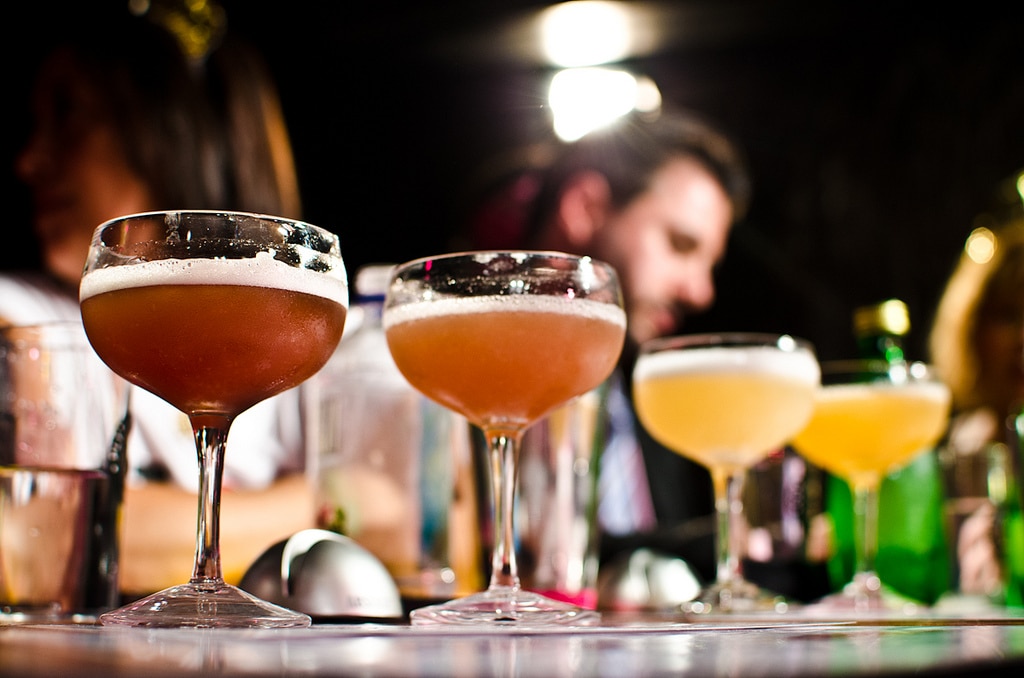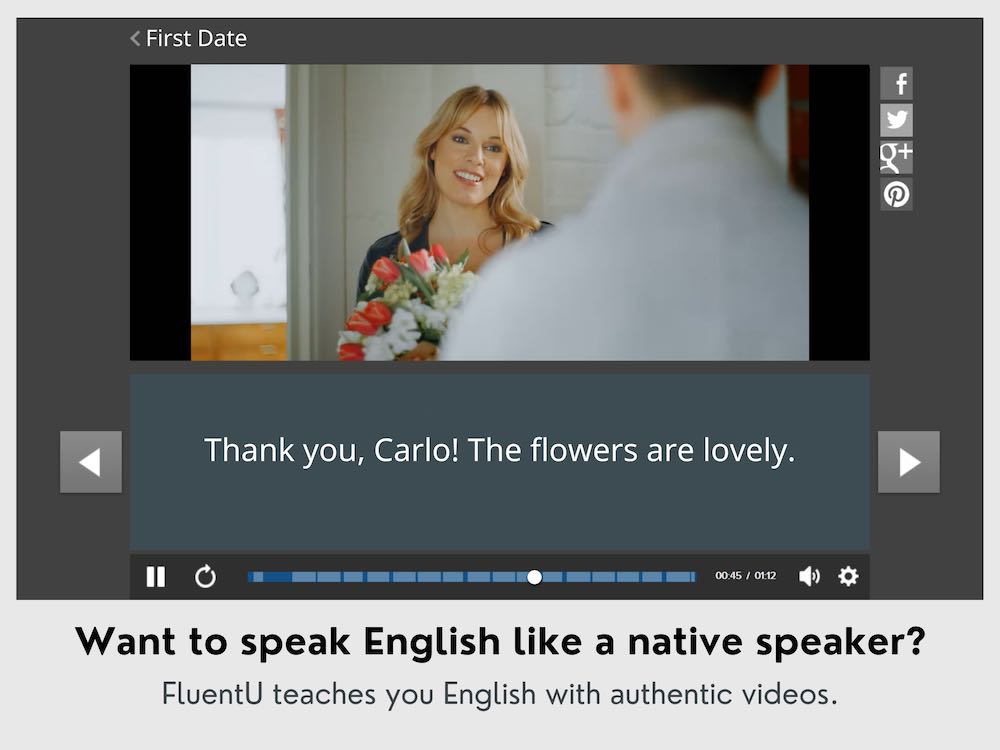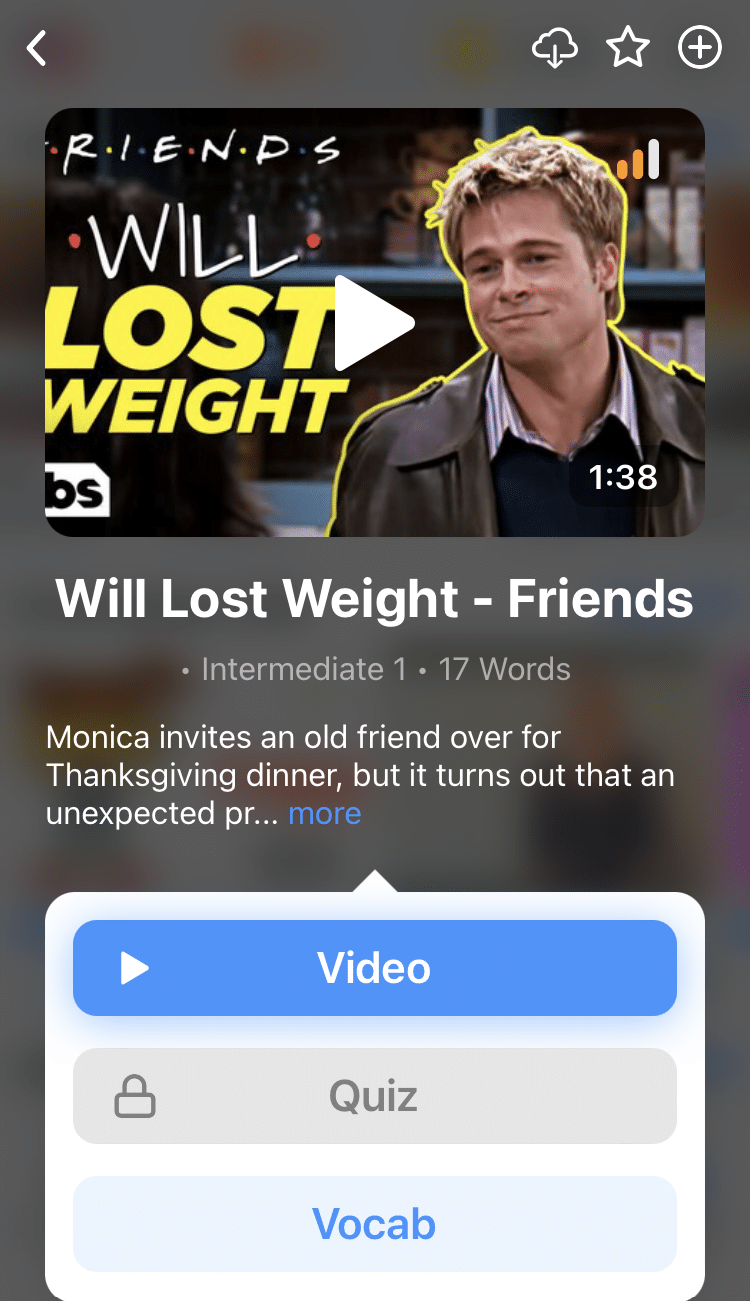
Bar Vocabulary: 24 Words for Bartenders in English
Just sit at a bar and listen to the casual conversation between the customers and the bartenders. Their words might sound like some kind of code.
Even if you understand the words they’re saying in English, you might not understand the terms and expressions they’re using (and you’re certainly not going to find some of them in the dictionary).
If you’re going to be a bartender, you’ll need to add these words to your vocabulary, too.
With just a dash of key words, a sprinkle of mixers, some fresh fruit and a handful of useful phrases, you’ll be able to stand out as a bartender and start happy hour off right!
Be warned though, some of these words and phrases can have different meanings, depending on the context. Get someone else to hold your beer and pay attention!
Contents
- Essential Words for Bartenders
- Essential Phrases for Bartenders
- Language and Communication Skills Bartenders Need
- Additional Resources for Bartenders
- And One More Thing...
Download: This blog post is available as a convenient and portable PDF that you can take anywhere. Click here to get a copy. (Download)
Essential Words for Bartenders
Back
Back is a word that can get confused with chaser. A back is a non-alcoholic drink that accompanies an alcoholic one. It’s usually something like water, lemonade, coca cola or even pickle juice.
Example:
I’d like a gin with a pineapple juice back.
Chaser
A chaser is a milder drink that is consumed immediately after a stronger alcoholic one. It’s often drunk to enhance or reduce the flavors of the liquor that came before.
It can be the same things you’d drink as a back, or even a milder alcoholic drink, like beer. One popular example of a chaser is lime juice after tequila.
Example:
Should we get orange juice as a chaser for the whiskey?
Cocktail
Cocktails are any mixed drink containing three or more flavors.
Nowadays, the word cocktail is used for all kinds of mixed alcoholic drinks, from martinis to margaritas. But it originally referred to a drink made with “spirits, sugar, water and bitters.”
That means that a gin and tonic isn’t a cocktail! Some popular cocktails are apple martinis, black Russians, cosmopolitans and Manhattans.
Example:
One mojito for me and a margarita for my friend, please.
Dirty
When you make a drink dirty, you add an extra ingredient or change some of the essential ingredients to slightly alter the color and taste of it. This change in ingredients makes the drink slightly tan, or dirty.
A dirty martini, for instance, contains olive juice, while a dirty mojito uses raw sugar instead of granulated white sugar.
Example:
I’d like a dry martini. With a lot of olive juice, please. Let’s make it really dirty!
Dry
Dry is a very simple and straightforward adjective that refers to a drink that lacks the qualities to make it sweet. For instance, a dry martini is used with dry vermouth instead of sweet vermouth.
This term is often associated with martinis, but can also refer to wine or Manhattans.
Example:
Yes, I’ll take a dry martini—er, wait, make that two dry martinis.
Long
A basic mixed drink such as a gin and tonic can be served long, which means that more mixer than usual is added to the standard amount to dilute (thin out) the alcohol content.
Also, long drinks are served in a long glass but have less alcohol content than a short drink.
Example:
I’ll have a Tom Collins, long.
Neat
To have a drink served neat means to have it out of the bottle into a glass served at room temperature without ice. This way, you can enjoy the full flavor of the drink as it’s presented.
Note: It’s important to clarify that neat is used only with spirits.
Example:
I always order my whisky neat. I prefer it at room temperature.
On tap
On tap refers to when beer is poured from the tap rather than a bottle or can. That means that the beer is usually coming from a keg or barrel and is likely to be fresher. The beer itself is called draft beer.
Example:
What do you have on tap?
On the rocks
No, we’re not talking about actual rocks or stones of any kind. To have a drink on the rocks means to have a drink poured over ice. This is most commonly used with scotch or whisky, but it can be used with other drinks, too.
This expression probably comes from the days when ice cubes were chipped off of a larger block of ice or rock. As it became more famous, it turned into a more popular way to order whisky.
Examples:
I’d like some Johnnie Walker Black on the rocks, please.
Oh, I love my scotch served on the rocks. It tastes so much better!
Short
Short drinks are, basically, served in a short glass with ice and the standard measurement of spirits and mixers. These short drinks usually include a liquor such as amaretto or coffee for extra flavor.
Example:
And I’ll take a Black Russian, short.
Mixed drink
A mixed drink is basically a drink with two or more mixed ingredients. They can even be non-alcoholic. Some popular types of mixed drinks are cobblers—drinks made with wine or sherry, citrus juice and sugar.
Example:
Do you have any recommendations for a mixed drink?
Spirits
When we’re talking about “spirits,” we’re not actually talking about a ghost or something haunting your basement or attic. Spirits refer to any unsweetened distilled alcoholic drink such as vodka, gin, brandy, whisky or tequila.
Examples:
Oh, you should try a mixed drink with less sugar, such as vodka with club soda.
This store only sells wines and spirits.
Straight up
Drinkers tend to confuse this term with neat. When a drink has been chilled through by stirring or shaking and then strained into a glass and served without ice, that’s a drink served straight up or just up.
Since both types of drinks are served without ice, you can see why people tend to get confused, but you don’t stir or shake a drink served neat.
Example:
I’ll have a bourbon, straight up, please. No, not straight up. Just a little ice.
Topless / naked
Topless is a term used mostly with specific drinks like a margarita. If you prefer your margarita without any salt on the rim of your glass, then you should ask for a topless or a naked margarita.
Example:
Bartender: How would you like your margarita?
Customer: I would like a topless margarita.
Top-shelf
This refers to the most expensive and best-quality liquor in the bar. Top-shelf liquors are usually (but not always!) on the highest shelf, hence the name. This expression can also be used for something that is of the best quality in general.
Example:
Let’s order the top-shelf whiskey for once!
Twist
A twist is a lemon rind that is served with a drink for extra flavor and decoration. It’s usually a longer piece that curls, which is where it got its name.
Example:
I’ll have a martini with a twist, please.
Virgin
A virgin drink is a very innocent one, since it’s a drink served without any alcohol in it.
So, if anyone asks for a virgin Cuba libre (like Sheldon did in this clip from the “Big Bang Theory”), they’re asking for rum and Coke without the rum. In other words, just a Coke served in a tall glass with a lime wedge.
Example:
One virgin piña colada, please!
Well
Well drinks are made with the house liquor, which means the least expensive liquor behind the bar. A well drink could also be a drink where neither the brand of the liquor or the mix is mentioned, such as rum and Coke.
Example:
I wouldn’t order the well drinks in that bar. They use the cheapest stuff they can find.
Essential Phrases for Bartenders
Along with the words above, you’ll probably hear some of the phrases that follow.
Behind the stick
Whenever a bartender is behind the stick, it means he or she is working behind the bar doing some actual bartending (instead of other tasks).
Behind the stick is a slang expression that might originally refer to the tap handles bartenders used for pulling glasses of beer, but its origins aren’t clear.
Examples:
Hey, are you going to be behind the stick tonight?
No, I’m not actually working at the bar tonight!
Two fingers of…
Despite being no longer common, the finger method is an interesting piece of bar history. The expression comes from the American saloons in the Old West (1830s to 1920) where you would order whiskey and the bartender would pour the amount to the width of his two fingers.
So, for example, if you walked into a bar and requested two fingers of whiskey, you would have gotten a straight, room-temperature spirit in an old-fashioned glass filled to the height of two of the bartender’s fingers.
Since bartenders have different sizes of fingers, serving lacked consistency. But recently, there has been an effort to standardize the finger pour method again, so maybe it will become more recognized as the drinking culture evolves.
Examples:
Give me two fingers of your finest sippin’ whiskey, barkeep!
Building a drink
This expression refers to a method for mixing drinks. When you’re building a drink, you start with ice and then build it by adding the spirit and mixers.
For example, if you’re building a martini, you pour it in a mixing glass, then add the ice, the gin and the vermouth.
Rolling a drink
This is another method of mixing a drink. When you roll a drink, you first put the drink in the mixing glass and then gently pour it into a shaker tin or another mixing glass to mix things together.
For example, a Bloody Mary is usually rolled because if we shake them, the tomato juice foams up.
Last call!
Last call is an expression used to refer when it’s about time for bartenders to close things up. It’s a warning from the bartender to the customers to order their last drinks, as the evening is wrapping up and the establishment is about to close for the day.
Every bar and establishment has their own way to give a last call. Some don’t even announce it orally (out loud) but instead ring a bell or flash the lights!
Language and Communication Skills Bartenders Need
A bartender doesn’t simply make drinks and put money in the tips jar. The main role of a bartender is to provide welcoming and warm customer service. In other words, to give their guests the best nights of their lives.
Knowing how to make drinks is connected to this role, but it’s only part of it. Here are some language and communication skills that will help you provide an outstanding customer service experience and separate you from other bartenders:
- Be attentive and listen to what customers are saying. If you overhear a guest telling a friend that they need an extra glass, deliver one before they have a chance to finish asking for it. It’s important to continually improve your listening skills.
- Remember the names of recurring (regular) customers and their favorite drinks. If someone comes to the bar repeatedly, make a little effort to memorize their order.
- Communicate effectively through body language, like good eye contact.
- Speak in a relaxed and confident way, tell jokes, laugh, be friendly. You need to be able to really converse with your customers, and make them feel at home in your bar.
- Get used to coded communication (i.e., “Whisky, neat!”). Drink orders won’t always be clear or in complete sentences, but they sure will be fast. To help you learn more about how people order drinks in English, check out the article below.
How to Order Drinks in English: 50 Essential Words and Phrases | FluentU English Blog
Knowing how to order drinks in English is essential if you’re planning on going out in an English-speaking country. Check out over 50 words and phrases for inviting…
Additional Resources for Bartenders
It’s best to start reviewing any employee handbook or training manuals provided by your employers. You can always find samples of these materials online if you don’t have one on hand.
If you’re still curious about English for bartenders (or you just want to have some fun with your friends), this YouTube channel gives you insider tips from behind the bar. The FluentU program has further videos that can show you how to have natural interactions with people in English.
FluentU takes authentic videos—like music videos, movie trailers, news and inspiring talks—and turns them into personalized language learning lessons.
You can try FluentU for free for 2 weeks. Check out the website or download the iOS app or Android app.
P.S. Click here to take advantage of our current sale! (Expires at the end of this month.)

Visit this website as well for plenty of exercises designed specifically with bartenders in mind. These will help you improve your English, while also reinforcing some of the words and phrases you’ve learned in this post.
And with that, we wrap up this article.
Now you have lots of new words and phrases stocked away, and you’re all set to go. We raise our glasses to you. Cheers!
Download: This blog post is available as a convenient and portable PDF that you can take anywhere. Click here to get a copy. (Download)
And One More Thing...
If you like learning English through movies and online media, you should also check out FluentU. FluentU lets you learn English from popular talk shows, catchy music videos and funny commercials, as you can see here:
The FluentU app and website makes it really easy to watch English videos. There are captions that are interactive. That means you can tap on any word to see an image, definition, and useful examples.
For example, when you tap on the word "searching," you see this:
Learn all the vocabulary in any video with quizzes. Swipe left or right to see more examples for the word you’re learning.

FluentU helps you learn fast with useful questions and multiple examples. Learn more.
The best part? FluentU remembers the vocabulary that you’re learning. It gives you extra practice with difficult words—and reminds you when it’s time to review what you’ve learned. You have a truly personalized experience.
Start using the FluentU website on your computer or tablet or, better yet, download the FluentU app from the iTunes or Google Play store. Click here to take advantage of our current sale! (Expires at the end of this month.)











